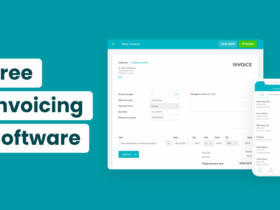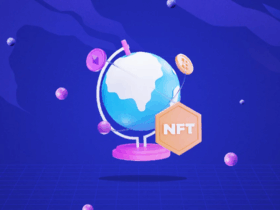What Is Crypto Airdrop?
A cryptocurrency airdrop is the act of giving away free tokens or coins to a certain group of people in the cryptocurrency ecosystem. Blockchain projects frequently use this marketing tactic to spread tokens, create interest, and increase public awareness. Airdrops can come in many different forms, such giving away tokens to current holders, taking part in community events, or just registering as a platform user. Promoting user involvement and cultivating a community of support for the project are the objectives.
A certain quantity of the new coin is usually given away to participants in the hopes that they would become stakeholders and possibly aid in the project’s expansion. Airdrops are viewed as an economical way for companies to establish user bases and kickstart their communities, while airdrop participants gain access to tokens without having to make a direct financial investment. However, as fraud and scams are frequent in the cryptocurrency world, consumers must be cautious and confirm the integrity of airdrop operations.
What Is Renzo Airdrop?
Renzo Airdrop is a Liquid Restaking Token (LRT) and Strategy Manager for EigenLayer. It is the interface to the EigenLayer ecosystem securing Actively Validated Services (AVSs) and offering a higher yield than ETH staking. The protocol abstracts all complexity from the end-user and enables easy collaboration between them and EigenLayer node operators.
Renzo Airdrop is a liquid derivative platform built on EigenLayer. Users can stake ETH and earn EigenLayer points as well as Renzo points. They don’t have their own token yet but could launch one in the future. Users who collect points may get an airdrop when their token goes live.
Basic Renzo Airdrop Points
| Basic | Details |
|---|---|
| Token Name | Renzo Airdrop |
| Platform | ETH |
| Support | 24/7 |
| Total value | n/a |
| KYC | KYC Is Not Requirement |
| Whitepaper | Click Here To View |
| Max. Participants | Unlimited |
| Collect Airdrop | Click Here To Collect Free Airdrop |
How To Claim Renzo Airdrop Step-by-Step Guide:
- Visit the Renzo website.
- Connect your ETH wallet.
- You will need some ETH. You can get it on Binance.
- Now stake some ETH.
- You will get the ezETH (LRT) in return.
- Now, you will start earning yield.
- Because it’s built on EigenLayer, you will also start earning EigenLayer points as well as Renzo ezPoints.
- Also, get 10% of Renzo points from each referral.
- They don’t have their token yet but have hinted at rewarding early users based on their points.
- You could also become eligible for the EigenLayer speculative airdrop for earning EigenLayer points.
- Please note that there is no guarantee that they launch their token or will do an airdrop to early users. It’s only speculation.
How To Check Renzo Airdrop Is Real Or Fake
Checking the legitimacy of a crypto airdrop can be a bit tricky, as scammers often use sophisticated techniques to create fraudulent airdrop campaigns that appear to be legitimate. Here are some steps you can take to verify the authenticity of a crypto airdrop:
- Official website and profiles on social media: Go to Renzo’s official website or the airdrop project’s website. Verify that the data on the website corresponds with the information in the notice of the airdrop.
- Comments from the Community: Seek opinions on the airdrop from the community. Engage in conversations on official forums, social media platforms, and online communities for cryptocurrencies to learn from other users’ perspectives and experiences.
- Whitepaper and Project Details: To comprehend the project’s objectives, vision, and tokenomics, read the whitepaper and other official publications. A valid airdrop ought to align with the overarching goals of the project.
- Valid Collaborations: Verify whether the project has declared alliances with respectable companies or people. Reputable initiatives frequently work with well-established companies in the blockchain and cryptocurrency fields.
- Channels of Communication: Airdrop announcements that come exclusively through unsolicited emails or messages should be avoided. Information on legitimate airdrops is usually disseminated through official channels, and the project team will use these channels to do just that.
- In summary, it’s important to conduct thorough research, verify the source and instructions, look for feedback from other users, and trust your instincts when evaluating the legitimacy of a crypto airdrop. By taking these steps, you can minimize the risk of falling for a fraudulent airdrop and protect your assets and personal information.
What are the risks of participating in an airdrop?
There are various risks associated with airdrop participation that people should be aware of before participating. First off, there’s a chance that participants will fall victim to fraud and scams, in which dishonest parties stage airdrop campaigns in an attempt to coerce participants into divulging personal information or even to steal their cryptocurrency holdings. Users who take part in airdrops may also be asked to divulge personal information, which increases the possibility of identity theft or illegal access to personal data.
Furthermore, there’s no assurance that airdropped tokens will increase in value down the road, and their value can fluctuate greatly. It’s possible that some airdropped tokens are useless or come from dubious projects. Lastly, there’s a chance that claiming airdropped tokens would require interaction with smart contracts or unidentified platforms, which could lead to technical flaws or vulnerabilities that could cost money. In order to reduce these possible risks, participants should be cautious, carefully investigate the authenticity of the airdrop, and give priority to security procedures.
Renzo Pros Or Cons
Pros of participating in an airdrop:
- Higher Yield Than ETH Staking: Renzo offers a higher yield than traditional Ethereum (ETH) staking, providing users with an opportunity for increased returns on their staked assets.
- Interface to EigenLayer Ecosystem: Renzo serves as the interface to the EigenLayer ecosystem, making it more accessible for users to engage with actively validated services (AVSs) and participate in the EigenLayer network.
- Liquid Derivative Platform: Renzo operates as a liquid derivative platform on EigenLayer, allowing users to stake ETH and earn both EigenLayer points and Renzo points. This flexibility enhances liquidity and diversification for participants.
Cons of participating in an airdrop:
- No Native Token Yet: Renzo currently does not have its own native token, which could limit the immediate benefits for users who prefer platforms with a fully developed token ecosystem.
- Dependency on EigenLayer: As Renzo is built on the EigenLayer network, its success is intertwined with the success and reliability of EigenLayer. Any issues with EigenLayer could potentially impact Renzo users.
- Token Launch Uncertainty: The promise of a future token launch is contingent on Renzo deciding to introduce its own token. The uncertainty around the timing and nature of the token launch may create ambiguity for users expecting specific rewards.
Renzo Final Verdicts
In conclusion, Renzo, as a Liquid Restaking Token (LRT) and Strategy Manager for EigenLayer, presents a promising platform that addresses several key aspects of decentralized finance. Offering a higher yield than traditional ETH staking, Renzo serves as the interface to the EigenLayer ecosystem, simplifying the engagement with Actively Validated Services (AVSs). The platform’s emphasis on abstracting complexity makes it accessible for a broader user base, fostering collaboration between end-users and EigenLayer node operators.
The liquid derivative platform aspect of Renzo allows users to stake ETH and earn both EigenLayer and Renzo points, providing a dual-reward system that enhances liquidity and diversification. However, it’s important to note that Renzo currently lacks its own native token, which may affect its appeal to users seeking platforms with a fully developed token ecosystem. The potential for a future token launch introduces an element of uncertainty, but the promise of airdrops for users collecting points adds an incentive for engagement.
As with any decentralized platform, users should exercise caution, considering market risks and the dependency on EigenLayer’s success. Additionally, the absence of a native token and the reliance on points merit careful consideration. Renzo’s approach to simplifying participation in blockchain activities and the potential for future developments make it an interesting platform, but users should stay informed and assess their risk tolerance before engaging in staking activities.









































